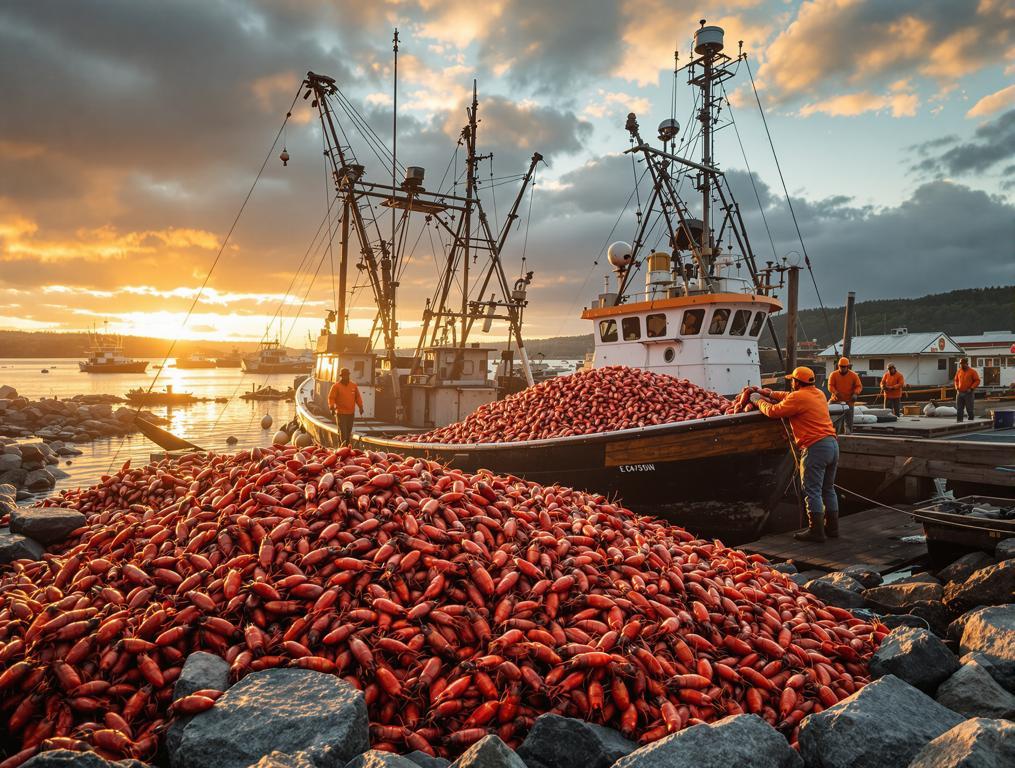The rhythmic pulse of lobster boats against weathered docks pulls me into Stonington’s harbor at 6:37 AM. Fishermen in orange bibs are already hauling traps as the June fog lifts, revealing Maine’s most productive fishing village. I’ve traveled to many American coastal towns, but this one hits differently — just 1,043 residents here produce an astonishing 14.85 million pounds of lobster annually. That’s roughly 14,240 pounds per person — more seafood per capita than entire neighborhoods of Boston consume in a year.
Stonington sits at Maine’s edge, 230 miles from New York City but worlds apart in pace. At the southern tip of Deer Isle, connected to mainland by a single arcing bridge, it feels both accessible and remote. The question nagging me: how does a town smaller than many high school graduating classes dominate America’s lobster industry while remaining virtually unknown to summer travelers?
The 1,043-Person Town That Lands 14.85 Million Pounds of Lobster
The Stonington Lobster Co-op, Maine’s second-oldest fishing cooperative, founded in 1948, hums with activity as I walk the docks. Captain Mike (not his real name) invites me aboard his boat, explaining the morning’s haul while sorting copper-shelled crustaceans.
“We’re not putting on a show for tourists here,” he tells me, measuring a lobster against a metal gauge. “This is just Tuesday.”
The math is staggering. In 2011, this community landed lobster worth $46.3 million — revenue that would make many Silicon Valley startups envious. The Stonington operation accounts for more than 20% of Maine’s entire lobster catch, making it the state’s top landing port by a considerable margin.
Unlike this Minnesota town of 3,463 residents that operates one of America’s largest iron ore ports, Stonington’s maritime prowess remains largely under the radar. The working waterfront stretches almost a mile, with zero trinket shops or tourist-trap restaurants in sight.
Where America’s Seafood Really Comes From (Not Where You Think)
Most Americans picturing “coastal Maine” conjure images of Bar Harbor’s crowded streets or Portland’s polished seafood restaurants. But here in Stonington, more than 300 active fishing boats supply much of what eventually lands on those upscale plates.
“I’ve been to the touristy spots up the coast. They sell the Maine experience, but this place actually lives it. The lobster you eat there probably came from here anyway.”
The Stonington operation resembles this Rhode Island village that rivals Newport without the crowds — authentic maritime culture without the performative coastal aesthetic. While tourists flock to more accessible harbors, Stonington’s fishermen maintain practices largely unchanged for generations.
Like this Texas town that preserves traditions Houston has lost, Stonington maintains authentic maritime practices that have disappeared from commercialized coastal destinations. The cooperative model — 80+ member fishermen collectively selling their catch — represents an increasingly rare economic approach in modern America.
Summer 2025: Perfect Timing for Authentic Coastal Maine
July brings the annual Stonington Lobster Festival, when the town briefly embraces its tourism potential without compromising its working identity. Timing your visit for early July 2025 means witnessing both peak lobster season and cultural celebrations.
Access is straightforward: follow Route 15 south from Blue Hill, crossing the dramatic Deer Isle Bridge. The drive from Portland takes about 2.5 hours, with free parking available at the town pier.
Beyond lobster, the Island Heritage Trust maintains several hiking preserves, including Settlement Quarry’s panoramic trails and Barred Island’s tide-dependent natural land bridge. The 1912 Opera House hosts films and performances that draw surprising talent to this remote community.
East Coast travelers seeking similar authentic maritime experiences should also consider this Maryland town that offers authentic Chesapeake Bay charm without the crowds of better-known destinations.
America’s Working Waterfront Secret
As afternoon approaches, I watch a boat offload nearly 300 pounds of lobster — just one vessel’s daily contribution to Stonington’s massive production. The captain nods when I ask if this quantity is typical. “Light day,” he responds, adjusting his cap.
What strikes me most isn’t just the volume of seafood but the absence of pretense. Stonington operates like a small-town factory where the assembly line happens to be the Atlantic Ocean. In a country where authentic places increasingly perform authenticity for visitors, finding somewhere that simply exists on its own terms feels like discovering a secret national treasure.
Standing on the granite-lined shore as evening approaches, I’m reminded that America’s most genuine places are often hiding in plain sight — just 230 miles from Manhattan, a working community quietly feeding the nation while barely appearing on the tourist radar. For now, at least.
